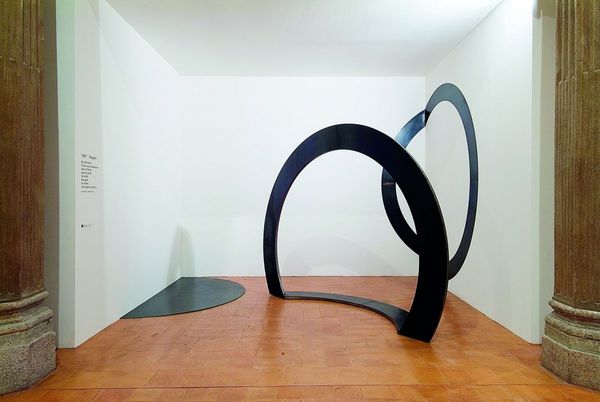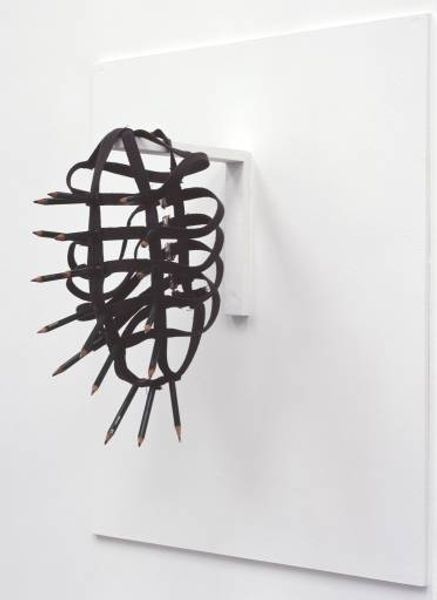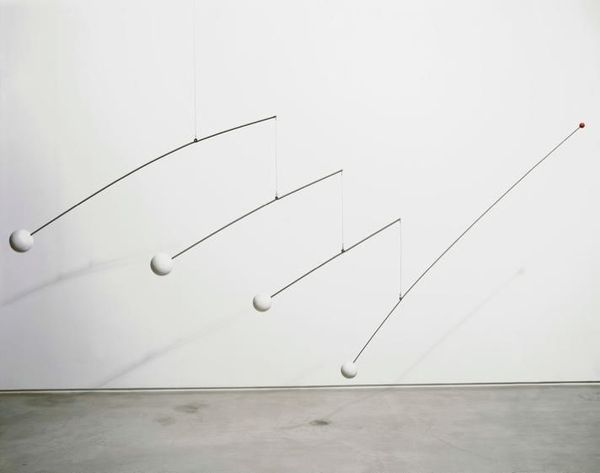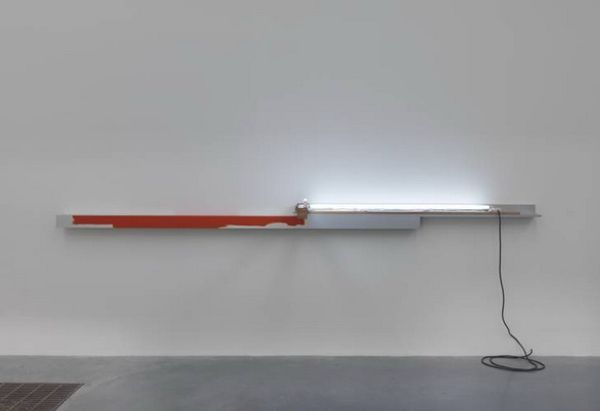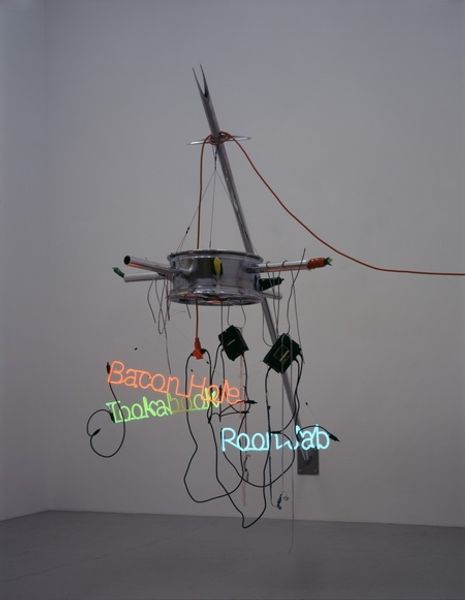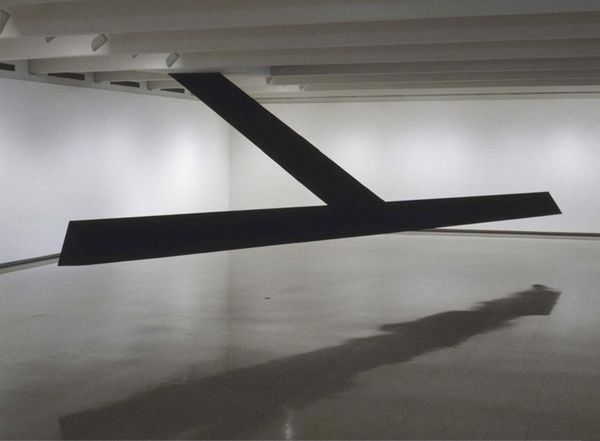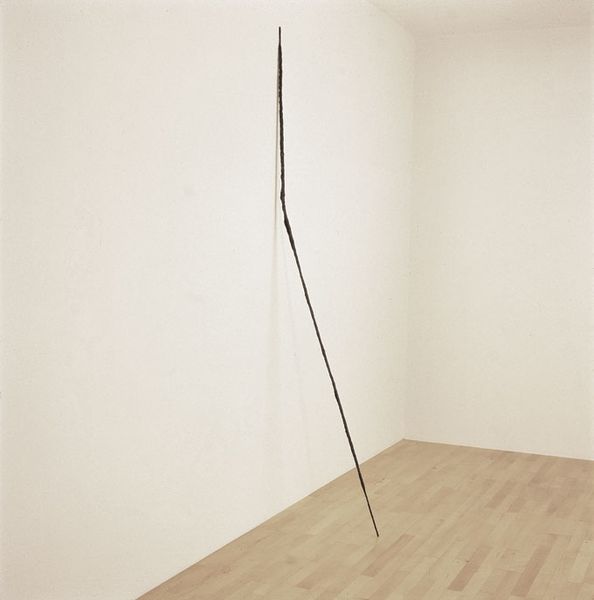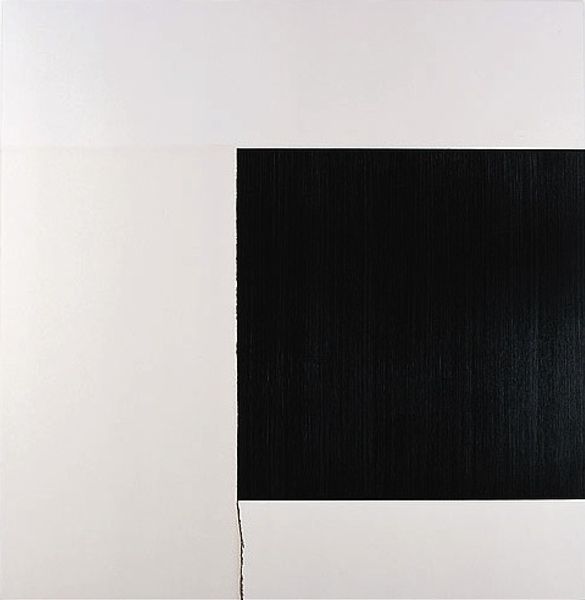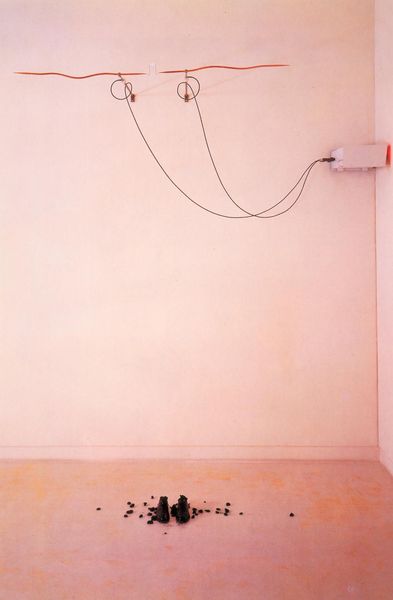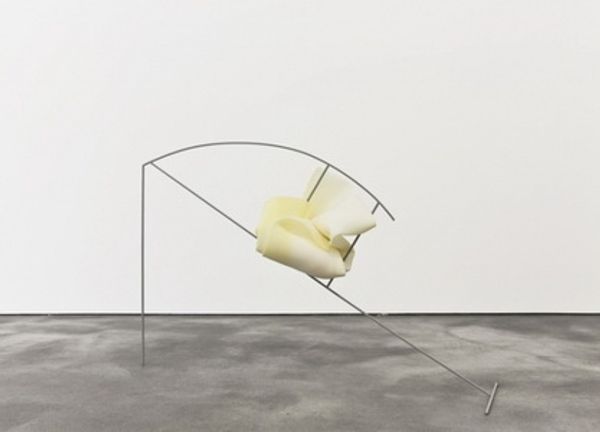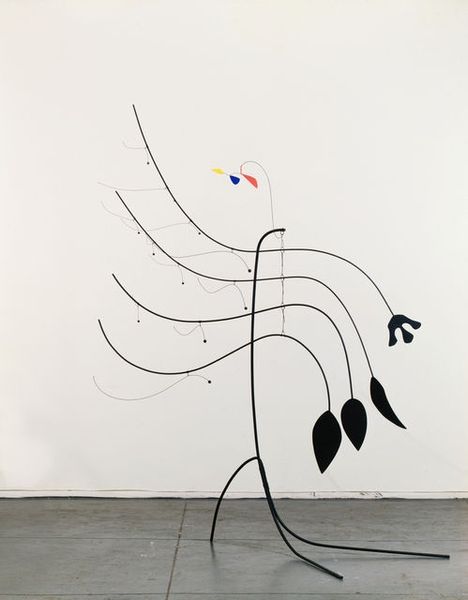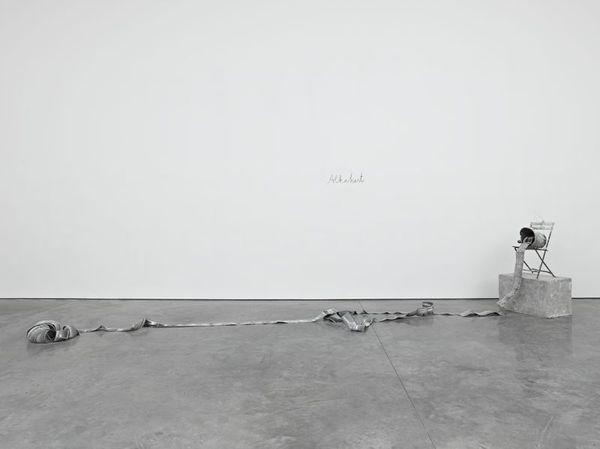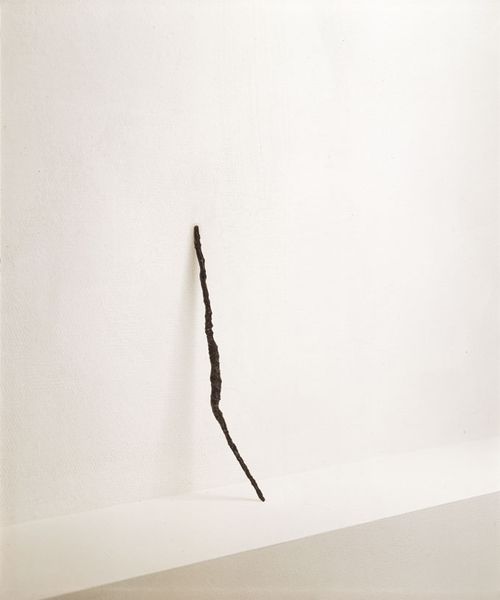
Dimensions: overall display dimensions variable
Copyright: © Lawrence Weiner | CC-BY-NC-ND 4.0 DEED, Photo: Tate
Curator: Lawrence Weiner’s wall installation, TAKEN TO AS DEEP AS THE SEA CAN BE, immediately strikes me with its stark simplicity. The scale is impressive and somewhat minimal. Editor: It's a rather melancholic scene, isn't it? That single, drooping line combined with the text gives off a feeling of loss and submersion. Curator: Indeed. The work, characteristic of Weiner, explores the relationship between language and material. The text functions as a sculpture, just as the graphic line does. Editor: And how language shapes our understanding of space and emotion. Considering Weiner's conceptual focus, I can't help but think about climate change and rising sea levels. Is this a commentary on environmental degradation, or perhaps displacement? Curator: It's open to interpretation, of course. But the beauty lies in how Weiner allows the viewer to complete the artwork with their own understanding. The inherent ambiguity is what makes it so compelling. Editor: Perhaps. Still, I find it difficult to ignore the work's potential to act as a stark reminder of our current ecological crisis. Curator: Regardless, the piece masterfully uses typography and form to create a powerful spatial experience. Editor: A somber and thought-provoking experience, at that.
Comments
tate 8 months ago
⋮
http://www.tate.org.uk/art/artworks/weiner-taken-to-as-deep-as-the-sea-can-be-t12039
Join the conversation
Join millions of artists and users on Artera today and experience the ultimate creative platform.
tate 8 months ago
⋮
Lawrence Weiner is one of the chief protagonists in the development of Conceptual Art. In the 1960s he was a key figure in expanding the definition of a work of art. Along with his contemporaries including Joseph Kosuth (born 1945; see Clock (One and Five), English/Latin Version 1965, Tate T01909) and Douglas Huebler (1924-1997; see Variable Piece No. 44 1971, Tate P07234), Weiner challenged the notion that an artwork had to consist of a definite physical object, contending instead that it could comprise a concept or idea with which the viewer would be invited to engage. Weiner’s practice focuses on this interaction between artwork and viewer or, in his terminology, the ‘receiver’ of the work of art. The principles underlying his art were outlined in a ‘statement of intent’ that Weiner first published in 1969:
